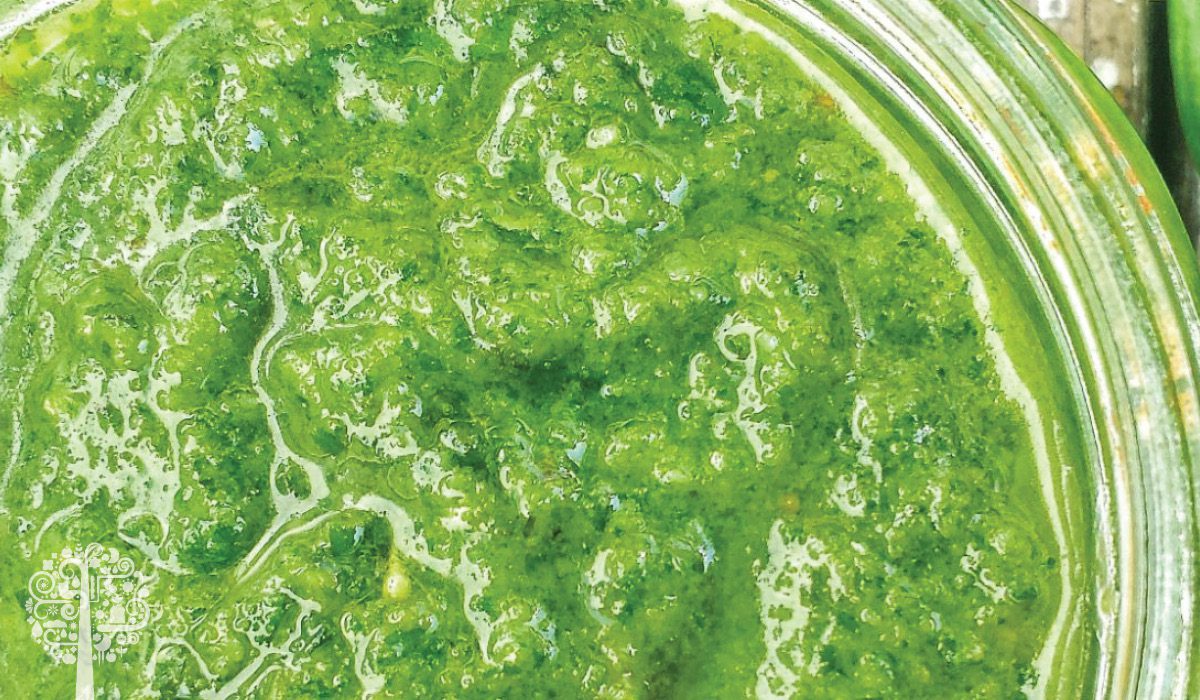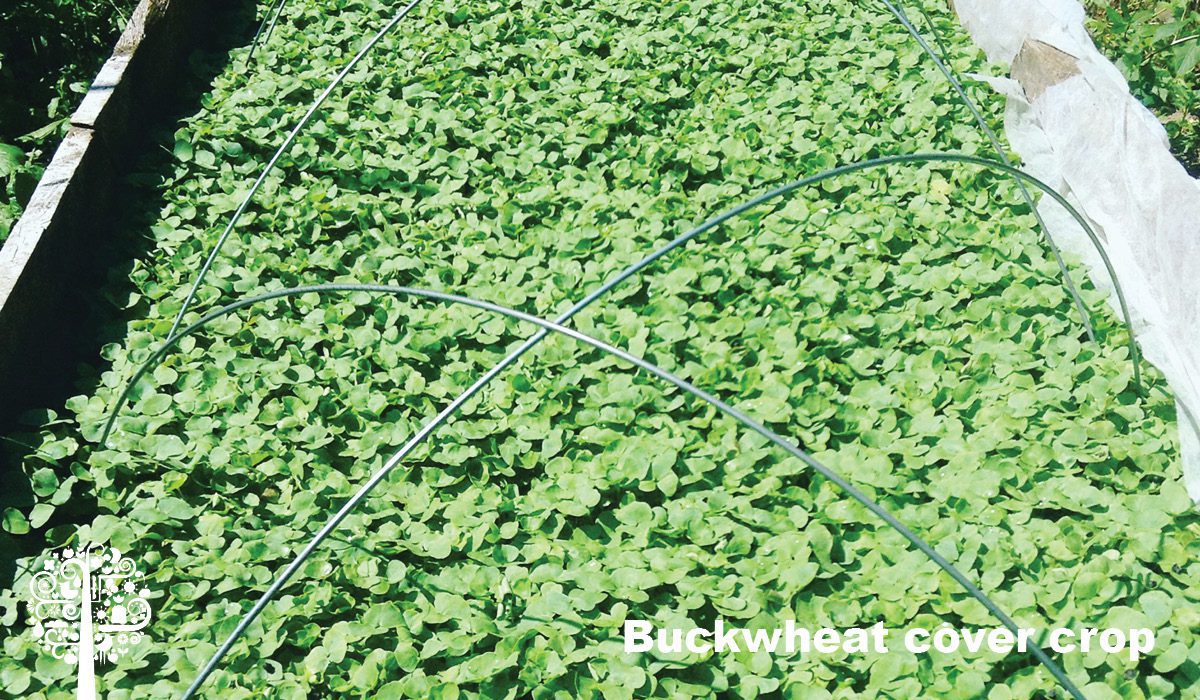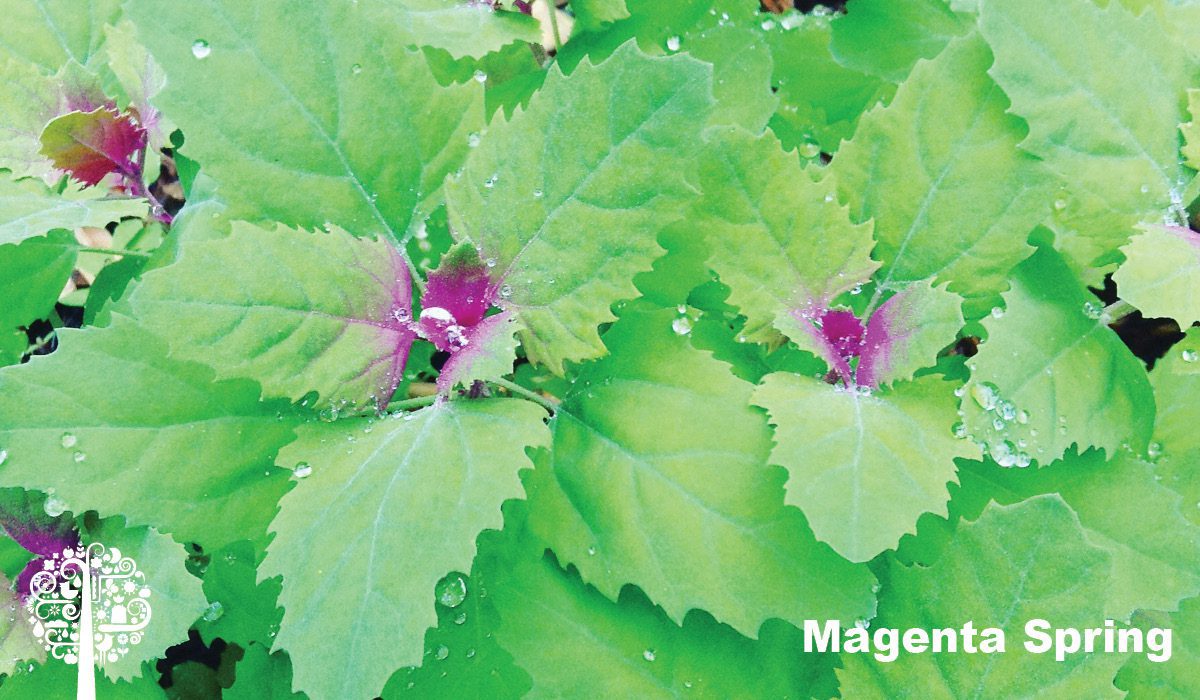Cover cropping is something I love to do; it’s like pressing reset on the garden bed you’re working on. Cover cropping can enrich the soil, build organic matter and possibly take care of some pest problems. I became even more motivated when I realized the by-product cover cropping creates. Using green manure crops like Buckwheat, Austrian Peas, field mustard, and various turnip or radish mixes results in a uniform bed of green and suppresses all weeds. As I cut the crop, I can also munch on the greens and enjoy how good they taste on their own.
Plenty of Pesto
I trim them off at soil height to not disturb the earth and then make them into pesto. What a discovery! Surely, I am not the only gardener doing this, as I find that making classic pesto with basil doesn’t always result in enough of it. I like to freeze large quantities for the winter months and add them to soups, stir-fries, stews, and more.

I’ll often mix some chopped fresh mint with plenty of olive oil, salt, and some nutritional yeast in a food processor or a blender, and then pour the pesto into ice cube trays for easy portions. Drop that green taste of summer into your winter supper and dream of spring!
Delicious Cover Crops
One of my favorites is the Austrian peas, which grow super fast (and are very cold hardy) and blend up nicely to make a bright green pesto. Adding basil and some kind of nut to the mix can add texture and depth of flavor. Even Buckwheat makes a great pesto if harvested when only a few inches high. It’s a bit watery, so you can play with the ingredients to get it to the right pesto texture you want.

Last year, we saw a massive amount of the beautiful Magenta Spreen, which is in the buckwheat family and readily self-seeds, so we chopped a bunch of that and whipped it into a pesto as well. Any young tender green/weed can work, and some flower petals, especially those of Monarda, work well as a garnish. At the height of summer, the Monarda petals lend a nice sweetness to your culinary creations. The cultivated dandelion can become very prolific and also makes a great pesto.
If you have chickens, of course, they will love the chopped cover crops, and I have grown them in trays under lights in winter with some success.
Small-Scale Cover Cropping
Borrowing some of the larger farms’ techniques, like cover cropping, and playing with them on a garden scale can lead to exciting discoveries and potential niche markets.

I buy organic non-treated bulk seed from a farmer who has a sideline selling custom cover crop mixes. The seed companies themselves can connect you with a local dealer. It’s worth it to buy in bulk (10-25kg), as I have stored the seed in metal grain bins in a cool place going on two years and, apart from the peas, have had reliable germination.